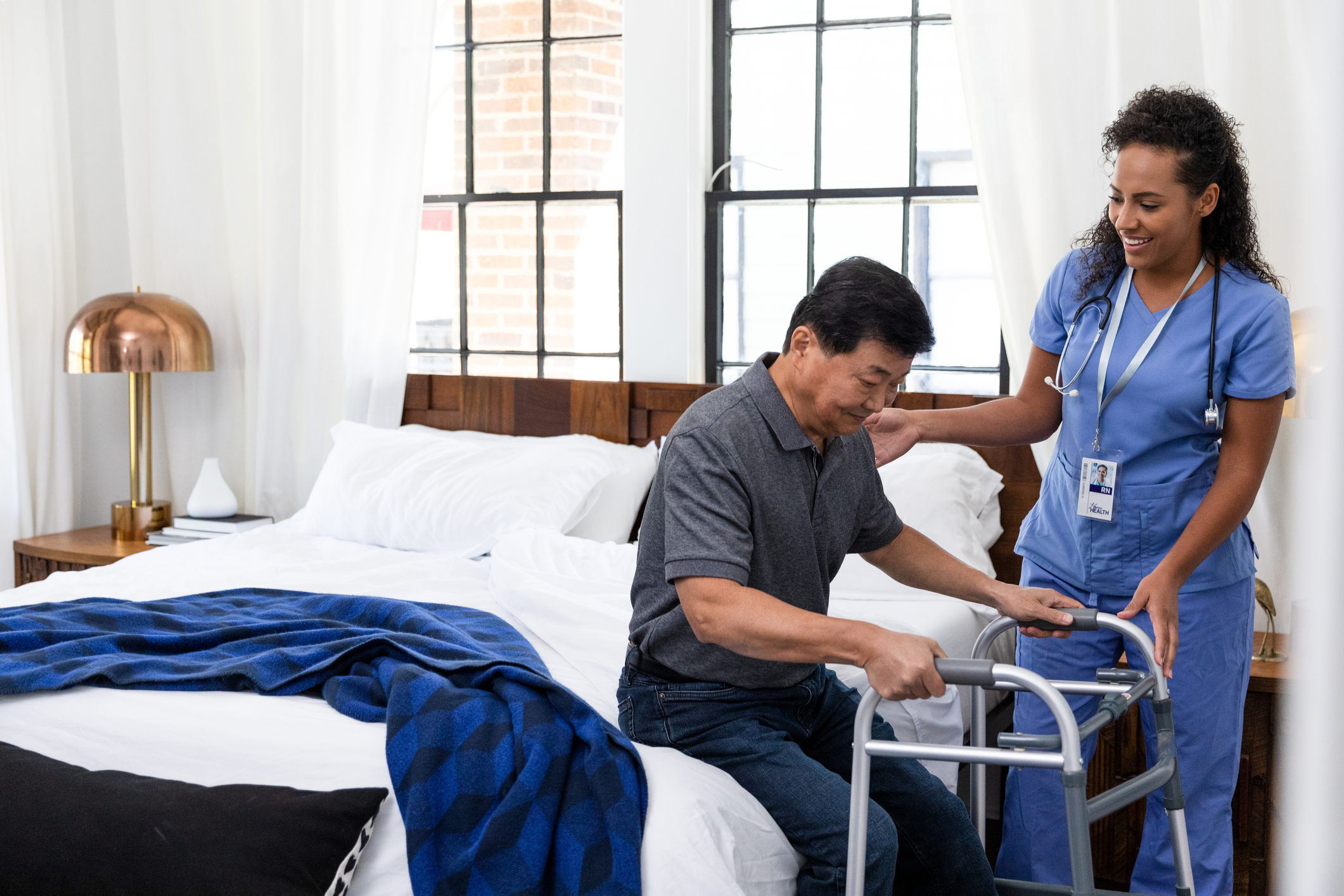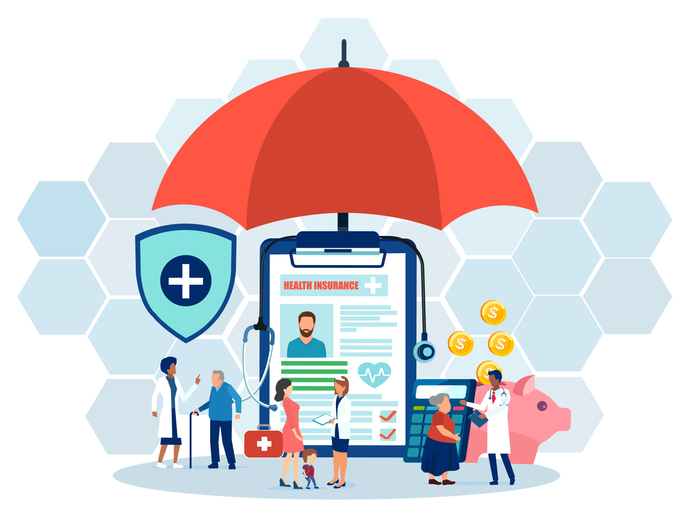
Over the past two years, the need for social distancing brought more patient care into the home. A March 2022 survey found that 76% of people who have had a telehealth visit since July 2021 would prefer telehealth visits in the future. Physicians are in favor of the trend as well, with 75% saying that telehealth has allowed them to deliver high-quality care and more than 70% feeling motivated to increase telehealth use. Studies suggest that in-home care results in better patient outcomes and costs up to 30% less to provide than in-person care.
As more health systems expand at-home offerings, home health care workers face new responsibilities with an emphasis on efficiency. That places a greater focus on digitization. However, the increased adoption of digital tools has sparked concern about factors like cybersecurity and sanitization, while simultaneously creating opportunities for new workflows with the growing use of remote monitoring tools.

Health Benefit Consultants, Share Your Expert Insights in Our Survey
Matt Rice Matt Rice serves as a territory account manager at Panasonic Connect, where he focuses on equipping the healthcare industry with rugged mobile solutions. Earlier in his career, he held account management roles at Quest Software and Fujitsu. Matt obtained his bachelor’s degree in business marketing and his master’s degree in athletic administration from […]
Achieving enhanced efficiency through digitization
Serving more patients at home makes efficiency a greater priority for home health care workers and rugged mobile technology is a key differentiator, empowering them to digitize manual workflows.
Reporting consumes a significant portion of home health care workers’ time daily, especially if they need to return to an office in between visits to document notes. Having access to a laptop in the field can help streamline this process tremendously. Workers can file reports from their car while the details of the visit are still fresh in their memory. This helps cut down on potential errors.
Devices equipped with embedded cameras enable more comprehensive reporting. A 2019 study found that more than half of physicians use text messages and digital image transmission when communicating with patients. Instead of finding the words to describe how an injury looks, home health care employees can attach images, so doctors and other members of the care team can “see” the situation and monitor progress.

A Deep-dive Into Specialty Pharma
A specialty drug is a class of prescription medications used to treat complex, chronic or rare medical conditions. Although this classification was originally intended to define the treatment of rare, also termed “orphan” diseases, affecting fewer than 200,000 people in the US, more recently, specialty drugs have emerged as the cornerstone of treatment for chronic and complex diseases such as cancer, autoimmune conditions, diabetes, hepatitis C, and HIV/AIDS.
Devices with a built-in barcode reader can help care providers keep track of medications and monitor prescription re-fill dates. Scanning the RFID tag on a patient’s medical bracelet also records the time of day an individual received care.
Finally, scanning software can help workers digitize paper forms they receive to ensure all patient information lives in one place. Devices equipped with electronic pens for signature capture streamline this process even further, making it more efficient to file insurance claims and consent forms digitally. The ability to digitize time-consuming processes like record-keeping not only increases worker productivity, but also supports greater accuracy and quality control.
Meeting security and sanitization requirements
Healthcare is one of the most highly targeted industries for cybersecurity breaches. The implications of these attacks can be severe. In 2020, Universal Health Services witnessed a cyberattack that forced several of their U.S. locations to reroute patients to different facilities and move to paper-based processes until IT teams resolved the attack.
As home health care workers leverage their mobile devices more frequently to file reports and access electronic health records, device and data security become a top priority. Inherent in their design, enterprise devices often offer enhanced security features. On a basic level, these devices and the software applications housed upon them rely on password protection. Moving forward, we’ll see more home health care organizations seek out advanced security protocols, such as fingerprint readers, facial recognition, and other biometrics. Embedding these features into the device and making security part of the overall user experience means workers can keep their focus on their patients and care provider networks gain an extra layer of security by requiring additional authentication to access device information and their networks.
Device sanitization has always been a top priority and became even more so with the advent of the Covid-19 pandemic. Whether disinfecting a device before passing it off to a co-worker on the next shift or cleaning it in between visits to avoid the spread of germs, it’s important for home health care workers to use a device that can handle frequent sanitization. Those most suited for this are rugged devices. Not only can they withstand drops and spills, but they can survive continuous sanitization wipes throughout their life cycle.
Leveraging advanced connectivity for real-time consultation
Investment in digital health reached a new high of $57.2B in 2021. This is significant, as the industry not only enhances telehealth consultation, but also expands remote patient monitoring and real-time data sharing capabilities.
Mobile devices with a strong web cam are important, so home care workers can consult with hospital staff remotely. As the industry moves towards a future of 5G-enabled devices, those video capabilities will improve. Limited bandwidth and higher latency prevented 4G LTE from achieving the full potential of telemedicine. 5G-enabled devices will make possible real-time video streaming and high-resolution medical imaging, and support more immediate consultation between the patient, home health employee, and hospital staff.
5G will also enable high-speed data transmission, so home health clinicians can share patient data and vitals with hospital staff in real-time in the event complications arise. Additionally, 5G will create more opportunities to leverage IoT devices, as its strong bandwidth and widespread coverage can support device connection. This way, no matter the location of staff, they can easily collaborate to gather readings from medical equipment and monitor patients’ wearable devices.
Looking ahead
As home health clinicians continue to take on new responsibilities, technology will play a key role in streamlining existing workflows. It will be critical for organizations to ensure that technology deployments support staff efficiency and the ability to provide stellar patient care.
Photo: SDI Productions, Getty Images
Matt Rice serves as a territory account manager at Panasonic Connect, where he focuses on equipping the healthcare industry with rugged mobile solutions. Earlier in his career, he held account management roles at Quest Software and Fujitsu. Matt obtained his bachelor’s degree in business marketing and his master’s degree in athletic administration from Indiana University Bloomington.













